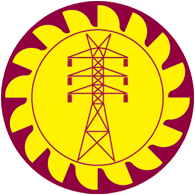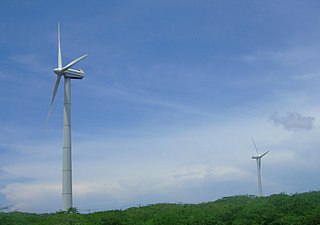The United Kingdom Central Electricity Board (CEB) was established by the Electricity (Supply) Act 1926. It had the duty to supply electricity to authorised electricity undertakers, to determine which power stations would be 'selected' stations to generate electricity for the board, to provide main transmission lines to interconnect selected stations and electricity undertakers, and to standardise generating frequency.

The Ceylon Electricity Board - CEB, is the largest electricity company in Sri Lanka. With a market share of nearly 100%, it controls all major functions of electricity generation, transmission, distribution and retailing in Sri Lanka. It is one of the only two on-grid electricity companies in the country; the other being Lanka Electricity Company (LECO). The company earned approximately Rs 204.7 billion in 2014, with a total of nearly 5.42 million consumer accounts. It is a government-owned and controlled utility of Sri Lanka that takes care of the general energy facilities of the island. The Ministry of Power and Energy is the responsible ministry above the CEB. Ceylon Electricity Board (CEB), established by the CEB Act No. 17 of 1969, is under the legal obligation to develop and maintain an efficient, coordinated and economical system of electricity supply in accordance with any licenses issued.

The Lakvijaya Power Station is the largest power station in Sri Lanka.

The Hambantota Wind Farm was a wind farm in Hambantota, Sri Lanka, owned and operated by the state-run Ceylon Electricity Board. The wind farm, which was located along south-eastern coast of Hambantota was the country's first state owned wind farm, and consisted of five NEG Micon M1500-600 wind turbines of 600 KW each. With a total installed capacity of 3 MW, the wind farm generated up to approximately 4,500 MWh of power a year.

The electricity sector in Sri Lanka has a national grid which is primarily powered by hydroelectric power and thermal power, with sources such as photovoltaics and wind power in early stages of deployment. Although potential sites are being identified, other power sources such as geothermal, nuclear, solar thermal and wave power are not used in the power generation process for the national grid.
The Sampur Power Station was a proposed coal-fired power station that was planned to be built in Sampur, Trincomalee, Sri Lanka.

NTPC Limited, formerly known as National Thermal Power Corporation, is an Indian central Public Sector Undertaking under the ownership of the Ministry of Power and the Government of India, who is engaged in the generation of electricity and other activities. The headquarters of the PSU are situated at New Delhi. NTPC's core function is the generation and distribution of electricity to State Electricity Boards in India. The body also undertakes consultancy and turnkey project contracts that involve engineering, project management, construction management, and operation and management of power plants.

Ceylon Petroleum Corporation, commonly known as CEYPETCO (CPC), is a Sri Lankan oil and gas company. Established in 1962 and wholly owned by the Government of Sri Lanka, it is the largest oil company in Sri Lanka. It was formed in 1961 by nationalisation and expropriation of all private oil companies in Sri Lanka at the time of its formation. It is under the ownership of Ministry of Petroleum Resources Development headquartered in Colombo. It is the largest government owned company in the country, with an operational profit of Rs. 33.9 billion for the financial year 2020.
The Kelanitissa Power Station is a state-owned power station located on the south bank of the Kelani River in the northern part of the city of Colombo, Sri Lanka. Commissioned in 1964, it is the first thermal power station built in Sri Lanka, after the country gained independence. The facility has a current gross installed capacity of 360 MW, a significant amount when compared to the total installed capacity of nearly 4,086 MW in the year 2017. The facility is owned and operated by the Ceylon Electricity Board.

The Mampuri Wind Farms are a set of three wind farms located near the Lakvijaya Power Station, on the Kalpitiya peninsula, in Mampuri, Puttalam District, Sri Lanka. The wind farms, referred to as Mampuri-I, Mampuri-II, and Mampuri-III, was built successively, and consists of eighteen Suzlon wind turbines ranging from 1.25 MW to 2.10 MW. Mampuri-I was commissioned on 22 March 2010, and was the first wind farm in the country to reach the 10 MW installed capacity threshold. As the government only allows projects up to 10 MW, the three wind farms are registered under three different company names, namely Senok Wind Power, Senok Wind Energy, and Senok Wind Resource.

The Uppudaluwa Wind Farm is a 10.5 MW wind farm owned by PowerGen Lanka (Private) Limited in Uppudaluwa, Puttalam, Sri Lanka.

The Yugadanavi Power Station is a large oil-fired power station in Sri Lanka. The 300 MW power station is located in Kerawalapitiya, in the Western Province of Sri Lanka.
The Colombo Port Power Station is a 60-megawatt powership, permanently moored at the Colombo Harbour, in the Western Province of Sri Lanka. After the plant's 15-year license expired in 2015, the Ceylon Electricity Board purchased the powership in a controversial deal. It was previously owned by Colombo Power Private Limited, a 50-50 joint venture by Mitsui Engineering & Shipbuilding and Kawasho Corporation.
The Sapugaskanda is a 160 megawatt power station located in Sapugaskanda, adjacent to the Sapugaskanda Oil Refinery, in the Western Province of Sri Lanka. The power station consists of twelve generating units, supplied by MAN, and Siemens. Four of the units are rated at 20 MW, while the remaining eight are rated at 10 MW. The power station is operated by the Ceylon Electricity Board.
The Ace Embilipitiya Power Station is a 100 MW thermal power station in Embilipitiya, Sri Lanka. The heavy fuel oil-run power station was commissioned in March 2005, and was operated by Aitken Spence. The power station consisted of fourteen Caterpillar 16CM32C generation units of 7.11 MW each, which consumed approximately 550 tonnes of fuel oil per day. The Ministry of Power and Energy discontinued purchasing power from the private power station after its license expired in 2015, and hence was subsequently decommissioned.
The Kankesanthurai Power Station was a fuel oil-run thermal power station which was commissioned as part of the urgent plan by the Ceylon Electricity Board to overcome the 1990s power crisis. Construction of the power station began in August 1998, and the power station was commissioned three months later on 4 November 1998 in Kankesanthurai, in the Jaffna Peninsula of Sri Lanka. It was the biggest power station in the Jaffna region, at that time.
Chunnakam Power Station was a thermal power station in Chunnakam in northern Sri Lanka. Commissioned in 1958, the station is owned and operated by the state-owned Ceylon Electricity Board (CEB). It was decommissioned in 2013, and replaced by the Uthuru Janani Power Station, which is constructed less than 100m south of the Chunnakam Power Station.
The Sapugaskanda Refinery is the single largest oil refinery of Sri Lanka. The refinery was built by Iran under the guidance of the Ceylon Petroleum Corporation in August 1969, initially designed to process 38,000 barrels (6,000 m3) per stream day of Dubai crude oil, and Arabian light crude oil. It was commissioned on 12 October 1969. The facility, which covers an area of 165 acres (67 ha), currently has a capacity of 50,000 barrels (7,900 m3) per stream day.

Vallibel Power Erathna PLC is a renewable energy company in Sri Lanka. The company operates three small hydropower projects. The company was incorporated in 2001 and in 2006, the company was listed on the Colombo Stock Exchange. Vallibel Power Erathna won the special honoree award in Forbes Asia's Best Under a Billion awards in 2015. Two projects of the company were eligible for the United Nations' Clean Development Mechanism.











